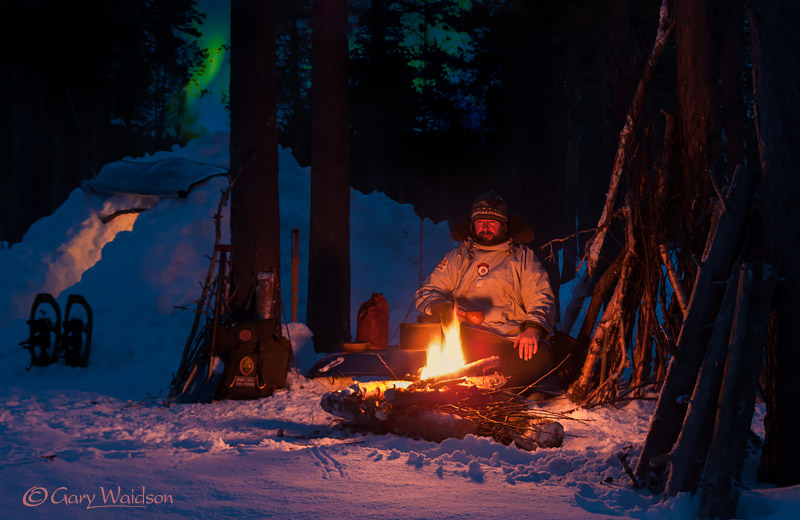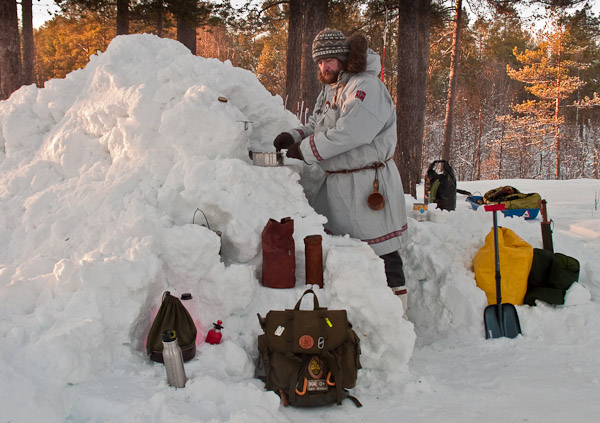
First off I'd have to say there are many members here with more experience than me in Arctic conditions but I thought it might be a good idea to collect together some tips for anyone considering a Winter camping trip for the first time.
I'll start with just a couple.
First of all, be organised. Everything really should have a place and be put back into that place when finished with.
On the evening you see pictured above I foolishly hung my folding saw on the firewood stack only to find the blade in the ashes of the fire the following morning. The rest of the saw had burned away completely.

That could have happened in any camp I suppose but items left lying about can quickly get covered in falling snow and lost. Small pieces of equipment will take every opportunity to bury themselves in snow as it gets kicked around too.
Organization is also important to keep loose snow from getting into bags and containers where it will cause problems when it melts. Dry bags are a big help for this but so is care and attention.
Secondly, use the conditions to your advantage. Snow is not simply a problem to be dealt with, it's a useful material that you can use.
Dig into it to make windbreaks for your stove, pile it up to make a comfortable seat, push your water bottles down into it to insulate them from the cold.

A little creative thought can really make the difference and best of all you don't have to carry the snow around with you.
Somebody else's turn now, I'll add some more later.



